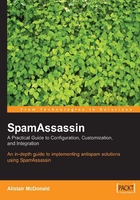
Spam and the Law
In the USA, legislation proceedings on spam have been in progress since 1997. The latest legislation is the CAN-SPAM act (Bill number S.877) of 2003. This supersedes many state laws and is currently being used to prosecute persistent spammers. However, it is not proving a deterrent; the Coalition Against Unsolicited Commercial Email (CAUCE) reported in June 2004 that despite several high-profile lawsuits by the Federal Trade Commission (FTC) and ISPs, spam volumes were still increasing. The CAN-SPAM act is seen as weak on two counts: that consumers have to explicitly opt-out from commercial emails, and secondly, only ISPs can take action against spammers.
In Europe, legislation exists that makes spamming illegal. However, when Directive 2002/58/EC was passed in 2002, there were several problems with it. Business-to-business emails were excluded—a business could spam each and every account at any other business and stay within the law. Additionally, each individual member state has to pass its own laws and penalties for offenders. The law requires spammers to use opt-in emailing, where recipients have to explicitly request to receive commercial emails rather than the opt-out model proposed in the USA, where anyone can receive spam and has to request to be removed from mailing lists.
The Guardian, a UK newspaper, reported in June 2004 that gangs of spammers are moving their operations to the UK due to the leniency of the laws there. The maximum penalty they face in the UK is £5000, while in Italy spammers face up to three years of imprisonment. Until June 2004, no one had been convicted under this act in the UK.
In Australia, The Spam Act 2003 came into effect in April 2004. This makes spam illegal, using an opt-in model. Additionally, there have already been successful prosecutions for spamming in Australia using previous laws.
The Internet is a multinational network and domestic legislation cannot reach to another country. A U.S.-based spammer would be at risk of prosecution if it spammed U.S. citizens and advertised a product made and sold in the US. But a spammer from the Far East would be at very little risk of prosecution. Domestic legislation will not affect the volume of spam, but it may occasionally affect the types of products advertised via spam.
Spammers will often reroute spam via other nations, so spam is sent from the US to another country and then relayed back to the US again. This makes it more difficult to trace the source of the email and to prosecute them. Many countries have no anti-spam laws and there is little or even no risk to the spammer. The blurring of geographical boundaries by the Internet does little to aid in tracing spam email to its source. Anti-spam is now moving towards tracking spammers through other means. In May 2004, the New York Times reported that the Direct Marketing Association is using paper trails in the real world to trace spammers in the virtual world with success.